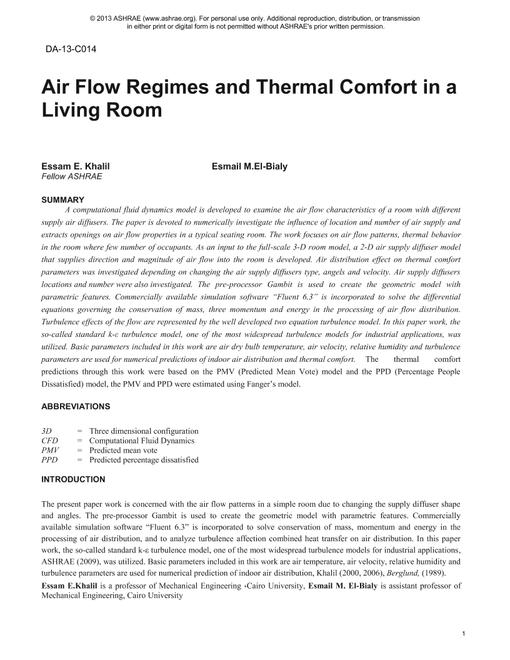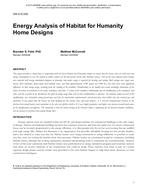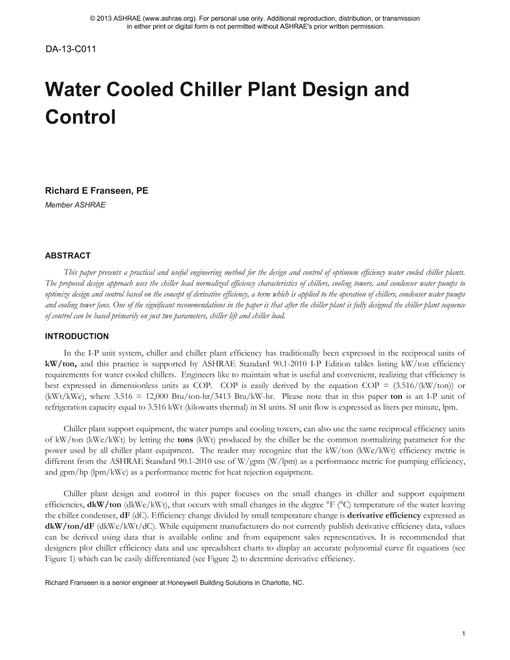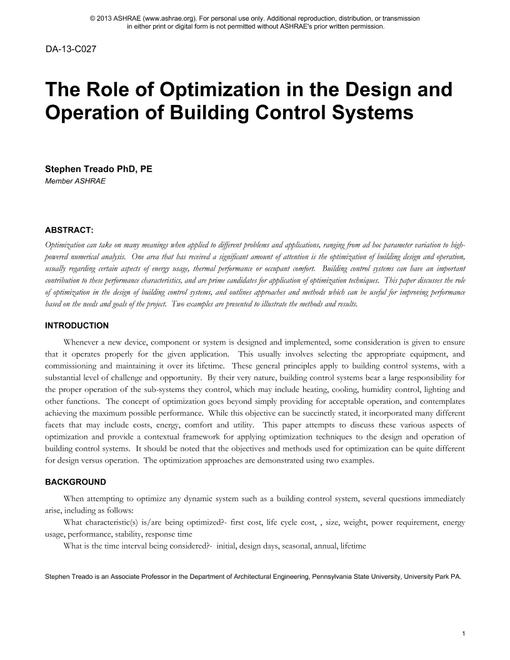-
-
Available Formats
- Options
- Availability
- Priced From ( in USD )
-
Available Formats
-
- Immediate download
- $16.00
- Add to Cart
Customers Who Bought This Also Bought
-

DA-13-C014 -- Air Flow Regimes and Thermal Comfort in a L...
Priced From $16.00 -

DA-13-C016 -- Energy Analysis of Habitat for Humanity Hom...
Priced From $16.00 -

DA-13-C011 -- Water Cooled Chiller Plant Design and Control
Priced From $16.00 -

DA-13-C027 -- The Role of Optimization in the Design and ...
Priced From $16.00
About This Item
Full Description
Historically, detailed building energy simulation programs have been used to either perform heating and cooling load calculations for HVAC equipment sizing purposes or to predict the whole building annual energy usage for evaluating a particular design. Based on user inputs that describe the building and imported weather data, these software programs simulate the hourly building performance over the course of a year, and provide outputs such as energy consumption by end use, demand, utility costs, etc. In this conventional approach, the building design parameters are essentially fixed by the user before the simulation is performed. Therefore, the standard practice is to use these programs for design analysis rather than design synthesis. The intent of the automated design methodology concept proposed in this paper is to use detailed building energy simulation programs in a different manner. Due to design constraints, aesthetic issues, program restrictions, or specific owner requirements, the optimal design may not be always desired. More valuable to the designer than determining the optimum is knowing the "latitude" s/he has in changing certain design variables while maintaining pre-selected desired performance criteria. The goal of the automated design methodology is thus to provide designers with a decision support tool rather than an optimization tool, i.e., a manner of generating numerous (in the hundreds) design alternatives which meet pre-stipulated performance criteria from which the designer can make the final selection for a particular project. Implementing such a methodology early in the design process will provide building professionals with a much larger solution set of possible designs options (which may not have been selected from intuition and experience alone). This paper describes the concept of automated design, lays the foundation for building such a methodology, and provides an illustrative example which begins to explore one possible approach of practically implementing the automated design approach.





